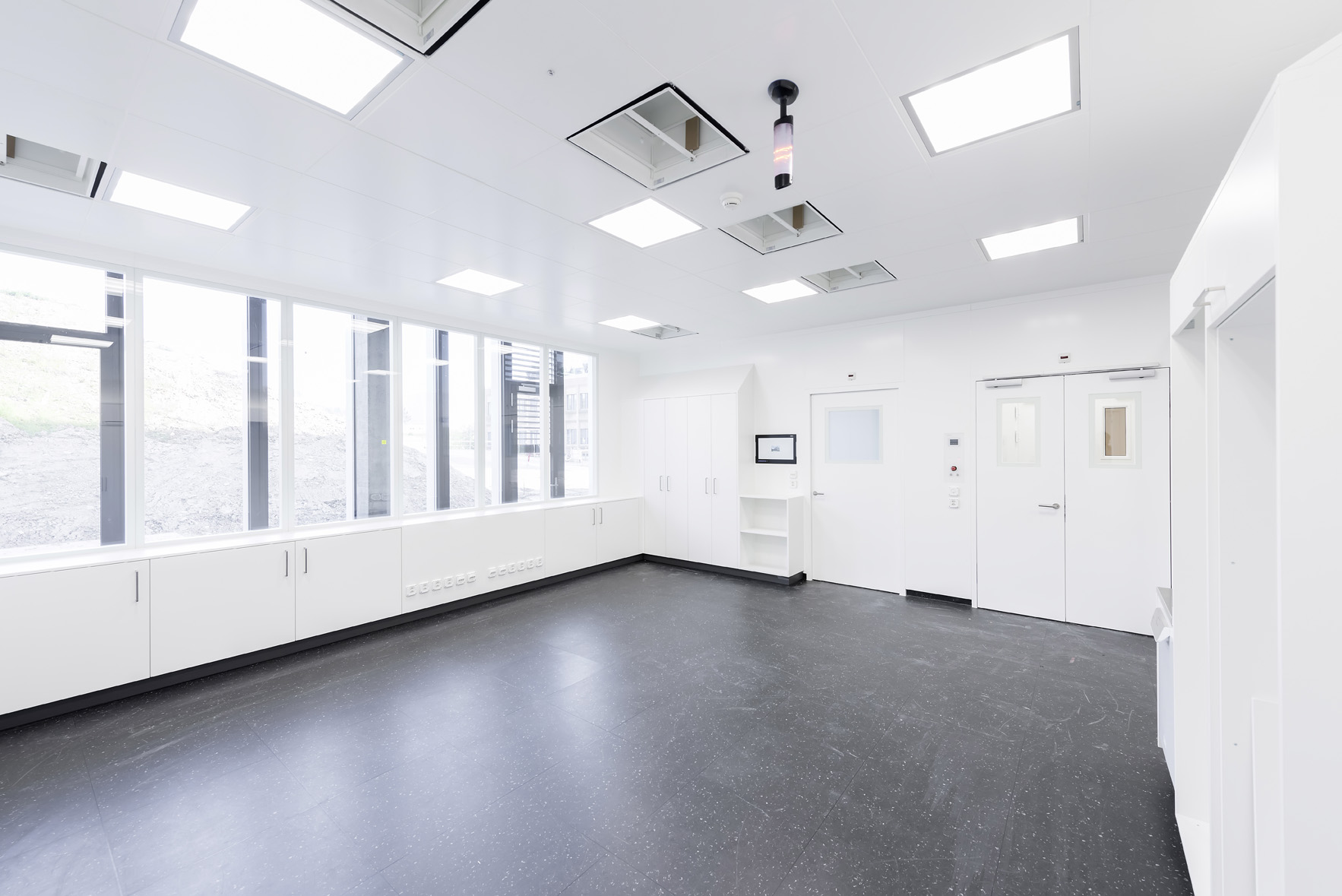Clean Room Design Experts
Science, electronics and pharmacy require low-in-particle work environments to control contamination. Designing these clean rooms is an individual process, accounting not only for the future use but – in the case of conversion of existing buildings – the specific given conditions. This requires knowledge, practical proficiency and experience. Suppliers offer modular wall and ceiling systems – P³ is there to support clients in choosing the right solution.

Analysis of needs and costs
The establishment and operation of the clean room are associated with costs: In addition to the one-time investment in the room system and technology, there are also running costs. A clean room should therefore be dimensioned in such a way that it meets the requirements of the user without taking up an unnecessarily large amount of space. Due to their modular design, clean rooms can be expanded and adapted according to requirements. Keep this in mind when planning, in case production is expected to increase in the foreseeable future.
Degrees of air purity
The air in clean rooms is divided into particle cleanliness classes (DIN standard EN ISO 14644-1), which differentiate between particle density and size. In the pharmaceutical sector, the GMP guidelines of Annex 1 also define the limits of permissible bacterial load.
Venting solutions
Which ventilation system is suitable depends on the ISO specifications. The design in a way that the deposition of particles is prevented and are discharged to the outside. To do this, entrances must be positioned in such a way that they cannot be blocked during operation. Air conditioning units control the temperature and room humidity; in most applications, a constant level is required here.
Access for staff and goods
Clean rooms are generally entered via locks that can be locked from both sites. They help to equalize pressure, bring materials in and also let staff change into protective clothing so that as few particles from outside as possible are carried into the clean room.
Materials
There are also guidelines for the cleaning of clean rooms, especially with regard to the cleaning agents to be used. Horizontal and vertical surfaces should be easy to clean and resistant to chemicals.
Furniture
Furniture in cleanrooms should offer little deposit opportunities for particles. Seating furniture should be resistant to abrasion. Surfaces made of plastic and stainless steel have proven especially effective thanks to their durability and easy cleanability.
